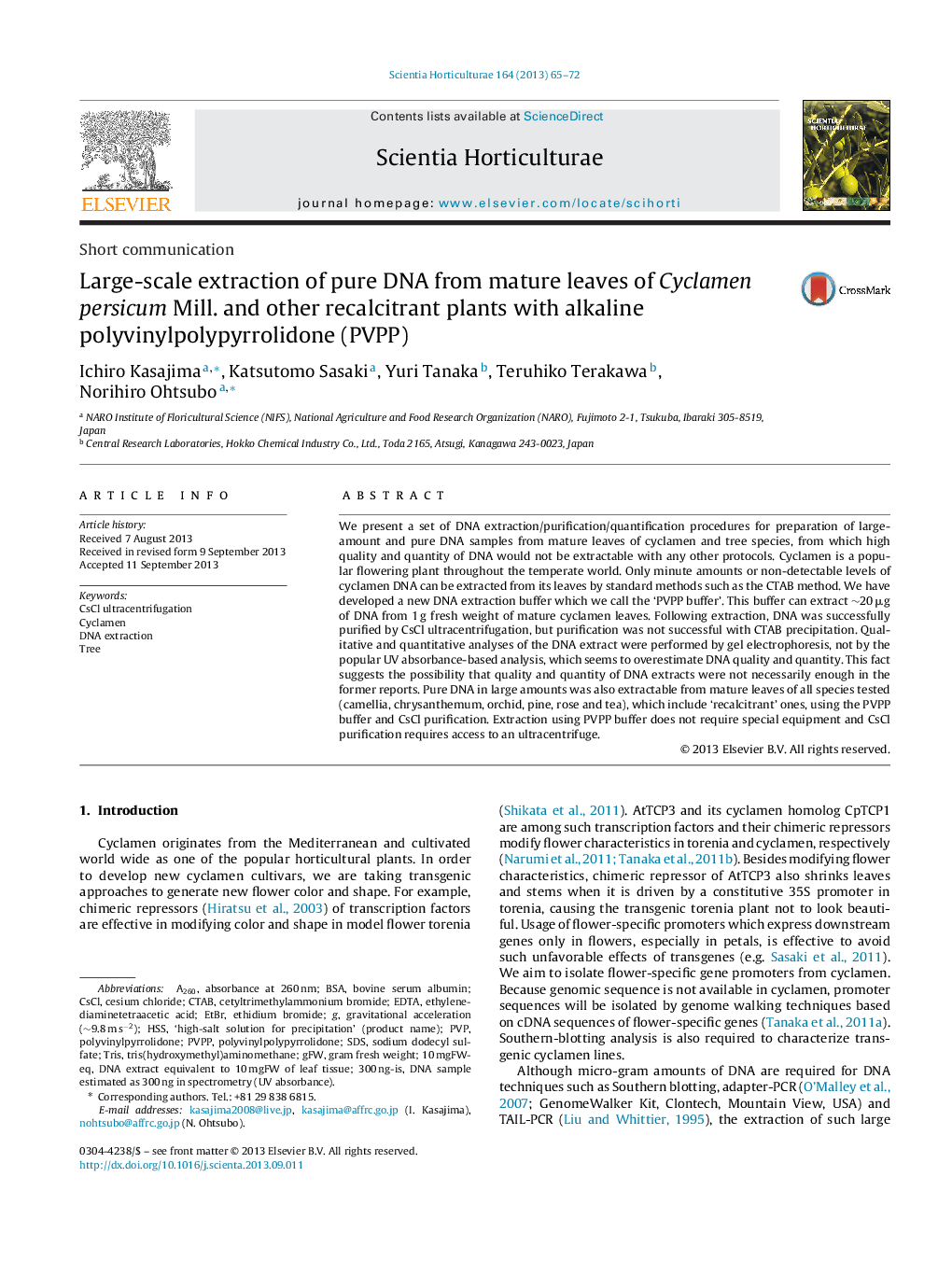| Article ID | Journal | Published Year | Pages | File Type |
|---|---|---|---|---|
| 4567042 | Scientia Horticulturae | 2013 | 8 Pages |
•High quality and quantity of DNA cannot be extracted from cyclamen with conventional methods.•New method was developed which uses PVPP for extraction.•This method can successfully extract DNA from cyclamen.
We present a set of DNA extraction/purification/quantification procedures for preparation of large-amount and pure DNA samples from mature leaves of cyclamen and tree species, from which high quality and quantity of DNA would not be extractable with any other protocols. Cyclamen is a popular flowering plant throughout the temperate world. Only minute amounts or non-detectable levels of cyclamen DNA can be extracted from its leaves by standard methods such as the CTAB method. We have developed a new DNA extraction buffer which we call the ‘PVPP buffer’. This buffer can extract ∼20 μg of DNA from 1 g fresh weight of mature cyclamen leaves. Following extraction, DNA was successfully purified by CsCl ultracentrifugation, but purification was not successful with CTAB precipitation. Qualitative and quantitative analyses of the DNA extract were performed by gel electrophoresis, not by the popular UV absorbance-based analysis, which seems to overestimate DNA quality and quantity. This fact suggests the possibility that quality and quantity of DNA extracts were not necessarily enough in the former reports. Pure DNA in large amounts was also extractable from mature leaves of all species tested (camellia, chrysanthemum, orchid, pine, rose and tea), which include ‘recalcitrant’ ones, using the PVPP buffer and CsCl purification. Extraction using PVPP buffer does not require special equipment and CsCl purification requires access to an ultracentrifuge.
Graphical abstractFigure optionsDownload full-size imageDownload as PowerPoint slide
